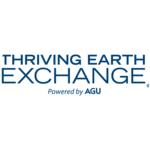About This Project
The population of the Pine Ridge Reservation in South Dakota possesses one the highest cancer clusters among Native Americans and the United States at large. Metal contamination from well water is suspected to be a major contributor. This project will develop an understanding of the broader scale hydrology, aquifer chemistry, and geology across 2 burrows within the reservation to determine the extent of metal contamination.Ask the Scientists
Join The DiscussionWhat is the context of this research?
Studies on the relationship between water and health have shown positive correlations in Chile, China, Bangladesh, Sweden, Michigan (USA), Twain and Nepal. Metals are generally associated with the sediments, coal, or peat, stratigraphically above an aquifer. In the case of arsenic contamination in many countries the source is all natural. Some anthropogentic sources are cleaning silicon chips, tanning, and ceramics. Preliminary water testing from 5 sites on PIne Ridge Reservation, South Dakota reveal several metals above the EPA recommended safe level for drinking water. These metals are: antimony, arsenic, bismuth, copper, lead, and uranium. When more than one metal is in drinking water 46% of the population are at risk of developing multiple cancers.
What is the significance of this project?
Preliminary water studies identified multiple metals in well water in rural areas of the reservation. This information coupled with the high rates of cancers indicates a possible connection between poor water quality and severe health problems. This project will characterize the well water, aquifers, and seasonal variations in the metals. The water samples will be collected in 2 burrows on the reservation to identify "hot spots" of high metal contamination and areas of safe water. This data will be input into a GIS system to produce maps that show chemical analyses of metals, bacteria (presence or absence), extent of the aquifer, location of safe wells on elements, and local geology. These maps will be easy to understand and made available to all tribal members.
What are the goals of the project?
1) Collect all existing water analyses and input into a GIS program at Oglala Lakota College.
2) Collect all papers on local hydrology and geology.
3) Work with our partners to identify the 2 burrows to be studied.
4) Hold meetings with our partners and burrow residents to explain the study.
5) Develop a sampling strategy that will provide the best answers to our questions on water quality and aquifer character.
6) First set of water samples will provide a quick survey of water quality within each burrow. Second collections will be determined these results..
7) Collect soil samples from outcrops representative of aquifer sediments. If cores are available sample them and send to lab.
8) Identify mineral deposits within the watershed.
9) Input all data into GIS and map.
10) Share results.
Budget
Previous water analyses were focused near the city or the piped rural water project, rural wells and aquifers have not been characterized. Very little information is accessible to the tribal members so they have reached out to us to help them. We are a small non profit that requires 100% grant funding for our projects.
The elemental water analyses are $65 a sample, radioactive gamma ray analyses are $500 a sample plus shipping. Previously only spotty sampling has been conducted. Phase I will analyze water quality in 2 burrows and develop a map of the aquifers and artesian wells across the reservation.
Our program is working will all the active groups that are concerned about water quality. This united effort will provide an overall sampling strategy, GIS mapping of the data, and hydrological mapping to understand water quality across the reservation. This project is Phase I of five phases that will quantify water quality across the entire reservation.
Meet the Team
Team Bio
Linda has worked on hydrogeology and arsenic mitigation in Nepal for 12 years. Members of the Harvey White Woman Cancer Support group and Defenders of the Black Hills Pine Ridge Reservation asked her to help with the water problems on the reservation. She observed that several members of a family died of cancer or were in treatment. The members also expressed concern for their children who are drinking the water. How could I refuse? My heart was touched by their passion and critical water problems. (Activities hiking, SCUBA, gardening)Hannan has taught at Oglala Lakota College since 2008. He specializes in geology, biology, statistics, and research methods for the SEM, Natural Resources, Environmental Science, and Nursing (RN) degree programs. He is also interested in the ecological, human, and social impact of declining water supplies, water contamination, prolonged drought in the northern Great Plains region, geologic mapping, GIS, stratigraphy and Cenozoic paleontology.
Thriving Earth Exchange
Powered by The American Geophysical Union
Press and Media
Fox News Deadly Water Interview by Tammy Vigil with Dr. Smithhttps://www.youtube.com/watch?v=Peqj2FZl19Y
UNDP GEF SGP Movie of our work in Nepal. Drinking Slow Poison http://youtu.be/FyTZoqvXouU
Chronicle of Higher Education on Dr Smith The Arsenic Hunter
http://chronicle.com/article/The-Arsenic-Hunter/25052/
Project Backers
- 7Backers
- 7%Funded
- $339Total Donations
- $48.43Average Donation


